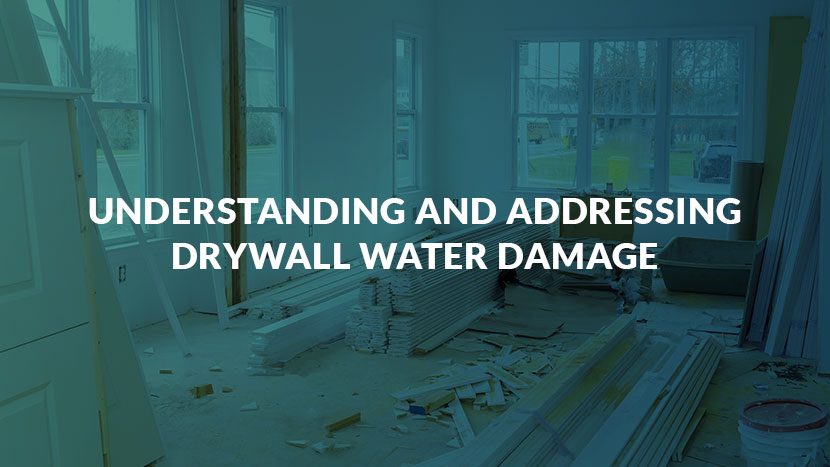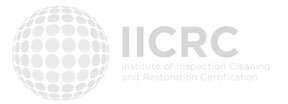
Water damage to drywall represents one of the most common yet potentially destructive household issues homeowners face today. Drywall water damage occurs when moisture penetrates gypsum board panels (commonly known as drywall or sheetrock), compromising their structural integrity and creating an environment favorable to mold growth.
Understanding the fundamentals of drywall water damage is the first step toward protecting your home and family from its potentially devastating effects. By recognizing the signs early and taking swift action, you can minimize damage, reduce repair costs, and maintain a safe, healthy living environment.
When water threatens your home’s integrity, CLEAR Restoration delivers expert drywall water damage restoration services. We handle everything from initial water removal through complete reconstruction. Don’t let water damage compromise your home’s structure or your family’s health—contact CLEAR Restoration at 225-245-3575 for professional remediation that restores not just your property but your peace of mind.
Identifying Signs of Drywall Water Damage
Detecting drywall water damage early can save homeowners thousands in repair costs and prevent potential health hazards. Knowing what to look for is crucial, as signs can range from obvious to subtle.
Visual Indicators
The most apparent signs of drywall water damage are visual changes to your walls and ceilings. Discoloration is typically the first noticeable sign – water stains usually appear as yellowish or brownish spots that may darken over time.
Tactile Signs
Beyond what you can see, touching affected areas can reveal drywall water damage. Healthy drywall should feel firm and solid. When damaged by water, drywall often feels soft, spongy, or even soggy to the touch.
Secondary Indicators
Your nose can be a powerful tool in detecting drywall water damage. A persistent, musty, earthy odor often indicates moisture problems and possible mold growth behind walls or above ceilings. Visible mold growth, appearing as black, green, or sometimes pink spotting on walls, is a definitive sign of moisture problems. Even small patches of mold indicate significant moisture is present and should never be ignored.
Hidden Damage
Perhaps the most concerning issue is the drywall water damage you cannot readily see. Signs of hidden damage might include unexplained increases in water bills, sounds of dripping or running water when no fixtures are in use, or unexplained dampness in carpets or baseboards.
Being vigilant about these indicators can help you address drywall water damage before it escalates into a major problem. What’s visible on the surface often represents only a fraction of the actual damage occurring within your walls.
[Related: Types of Water Damage: What You Need to Know]
Drywall Water Damage Timeline
The moment water contacts drywall, it begins to be absorbed into the porous gypsum core. Within minutes, water penetrates the paper facing and starts saturating the interior. During the first few hours:
- Drywall begins to swell and soften
- Paint or wallpaper may bubble or blister
- Water stains begin to develop
- Drywall tape may loosen
- Joint compound may become soft
At this early stage, the damage is primarily physical rather than biological. With prompt action, drywall may often be salvaged through proper drying techniques, especially if the water source is clean. The paper-facing on drywall acts as a temporary barrier, but once breached, water quickly saturates the entire panel.
Short-Term Damage (24-72 Hours)
If moisture persists beyond the first day, the situation deteriorates rapidly:
- Mold spores, which are always present in the environment, begin to colonize the damp materials
- Drywall continues to lose structural integrity
- Adhesives holding laminated surfaces may fail
- Musty odors become noticeable
- Water may migrate to previously unaffected areas
This period represents a critical tipping point. After 48 hours, the probability of salvaging water-damaged drywall decreases significantly, and health concerns begin to emerge. Microbial growth accelerates, particularly in dark, warm wall cavities where air circulation is limited.
Long-Term Consequences (72+ Hours)
After three days of moisture exposure, drywall water damage enters its most serious phase:
- Mold colonies become established and visible
- Wood framing behind drywall may begin to warp or rot
- Metal fasteners and supports may corrode
- Insulation becomes compressed and loses R-value
- Electrical systems may be compromised
- Cross-contamination to other areas becomes likely
At this stage, extensive demolition and replacement are typically necessary. The focus shifts from restoration to containment as mold and bacterial growth present increasing health hazards to occupants.
The Health Risks of Water-Damaged Drywall
Water-damaged drywall poses significant health hazards beyond structural concerns, with risks intensifying the longer exposure continues. The most prominent threat is mold growth, which typically begins within 24-48 hours in damp environments. Mold can trigger respiratory symptoms ranging from congestion and coughing to asthma exacerbation.
Additionally, bacteria thrive in water-damaged environments, potentially causing skin infections, gastrointestinal illness, and other health complications. The combined proliferation of mold, bacteria, and allergens like dust mites significantly compromises indoor air quality, leading to symptoms such as headaches, fatigue, difficulty concentrating, and respiratory irritation.
When to Handle Drywall Water Damage Yourself
Many homeowners face the decision of whether or not they want to tackle drywall water damage themselves or hire professionals. DIY assessment requires specialized tools that most homeowners don’t possess, including moisture meters, infrared cameras, and hygrometers. Without these instruments, it’s nearly impossible to determine the true extent of water migration within walls, often resulting in incomplete remediation.
Safety concerns also complicate DIY efforts, as water damage situations present numerous hazards, including electrical risks, contaminated water exposure, and potential structural instability. Professional remediation becomes necessary in several circumstances:
- Affected area exceeds 10 square feet
- Water has been present for more than 24-48 hours
- Visible mold growth has developed
- Damage extends to insulation, electrical systems, or structural elements
- Specialized drying equipment is required
- Household members have health vulnerabilities
While DIY approaches might seem cost-effective initially, they often lead to inadequate results and potentially greater expenses later. At CLEAR Restoration, we offer professional water damage restoration services that ensure water damage is addressed completely the first time, preventing recurrence and protecting both your property and health.
Preventing Future Drywall Water Damage
Implementing preventive strategies against drywall water damage is far more cost-effective than remediation. Regular home maintenance checks form your first line of defense—inspect roofing biannually, check plumbing connections monthly, examine bathroom caulking quarterly, test sump pumps seasonally, and schedule annual HVAC servicing.
Proper humidity control is equally important; maintain indoor relative humidity between 30-50%, ensure bathroom and kitchen exhaust fans vent properly, and allow adequate air circulation around furniture and exterior walls.
Additionally, seasonal preparation helps address weather-specific risks—insulate pipes in winter, check sump pumps before spring rains, monitor AC condensate lines in summer, and clear gutters in fall. While these preventive measures require some investment, they provide substantial returns by helping you avoid the disruption, expense, and health impacts of water damage events.
[Related: How to Handle Recurring Water Damage in Homes]
Take Action Against Drywall Water Damage – Call CLEAR Restoration!
Drywall water damage represents one of the most common yet potentially destructive challenges homeowners face. From the moment water contacts these porous building materials, a clock begins ticking – counting down the hours until minor damage evolves into significant structural and health concerns.
Don’t let drywall water damage compromise your home’s integrity or your family’s health. Contact CLEAR Restoration today at 225-245-3575 for expert assessment and professional water damage restoration services. Our team is ready to respond 24/7 to your emergency needs and provide a clear path forward to restoration.



